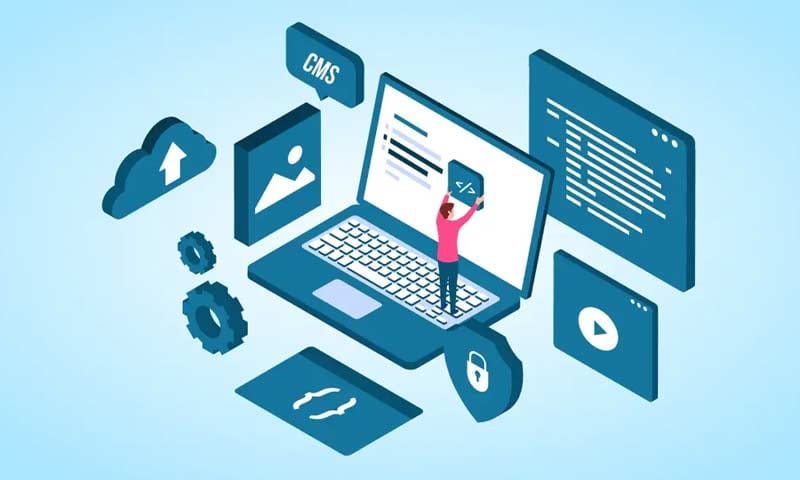Why Onboarding Emails Matter More Than You Think
Your onboarding messages will set the tone for your relationship with new subscribers. Onboarding messages are more than just welcome notes; they’re crucial first impressions that encourage new users to go from passive supporters to engaged contributors. When executed effectively, onboarding messages decrease churn, build trust, and set the stage for subsequent purchases. New subscribers are in their most engaged and interested state immediately upon subscribing. If you can capitalize on the opportunity with timely, well-placed messaging, you’ll keep subscribers aligned and not lost to your competitors.
Start Strong with a Clear and Personal Welcome
The first welcome email should immediately thank and set expectations. Do NOT send a generic “thank you for signing up” email. Use this as an opportunity to reinforce brand presence, set the tone for subsequent emails, and offer value at that moment. It can be a coupon code, a link to a free ebook, or a how-to for an item in your inventory/subscription box; give your new subscribers something more to validate their choice to subscribe. Just make sure you personalize it to some degree in terms of acknowledging their name or where they subscribed, so it has relevance. Tools to check your email templates can help ensure that your welcome email is responsive, properly formatted, and optimized for all devices before hitting send.
Guide Them Step-by-Step Through Your Value Proposition
New subscribers might not even know what your product or service can do for them. After all, if it’s an intricate service or new to them, why would they? Thus, onboarding emails should not only welcome new users to the fold in a general sense but also serve as a purposefully designed, step-by-step approach to rendering your value in a digestible fashion. Instead of bombarding subscribers with everything they need to know, the onboarding series will slowly but surely expose them through a meticulously planned approach over time to truly understand all the features they’d need or like to know.
For instance, every email should represent one idea or point to a singular benefit, singular feature, or singular outcome that a subscriber can achieve. This way, the user isn’t overwhelmed with too much information, and this gives your brand the chance to build a rich story over time. One email can show how your service saves time, and the next can showcase how it improves productivity or decreases costs. Giving subscribers a reason to keep opening your emails to learn more is a natural onboarding experience.
Think of your onboarding series as a tour. You’re not merely trying to showcase elements to sell them like a product manual; you’re offering new users the aspects of what you have to gain the most from it, allowing relevant engagement in a timely manner, independently, while fostering advancement. With bite-sized components, you minimize churn and maximize engagement for the long game.
You can do this to foster excitement, too. If your bite-sized emails offer enough substance, your subscribers will be more intrigued and invested to learn what happens next. Give them more value with subscriber-only bonus content like tips, case studies, or how-to videos, and your onboarding series will become an effective training tool that creates action out of engagement. You not only want to help them, but you need to ensure a streamlined experience that allows every subscriber to see why your product is worth their time and dependability.
Use Social Proof to Build Trust Early
At this pivotal moment, trust is everything. Incorporating social proof into your welcome email, testimonials, reviews, case studies, or press coverage can go a long way in establishing trust and reducing friction to entry. If other people succeed with your brand, there’s a higher probability that they feel they will succeed with your brand, too. Images of real people using your product or logos of Fortune 500 companies that purchase your product can do wonders for trust and authenticity. It makes new subscribers feel good that they’re not the only ones who want what they signed up for.
Encourage Early Engagement with a Simple Call to Action
Regardless, your onboarding emails should always contain a contextually relevant call to action (CTA). Your onboarding should ultimately teach new users how to do something, whether that’s “completing your profile,” “starting your free trial,” “booking a demo,” or something more minor like “watch this tutorial.” The CTA should be what makes the most sense for the user in that moment and what will help you achieve your long-term onboarding goal.
The key to success with a CTA is to make it as low-effort as possible and not confusing. You don’t want to overwhelm people with too many new places they can go or new actions they can take because additional next steps in an onboarding email can complicate what should be an easy experience. Therefore, your onboarding email should have only one next step that makes sense in that particular moment and nothing more (even if they just signed up and did nothing yet). If they’ve just signed up and haven’t seen your dashboard, say, “Take a quick tour.” If they’ve seen it and haven’t turned on one feature, say, “Try it out now.”
Moreover, the order should be logical so that each CTA feeds into the next with the same low-risk appeal. For example, if addressing the potential at the next step is made easier by eliminating friction, users are more likely to agree to what comes next. This boosts engagement rates and allows new users to gradually establish habits around your product or service habits which lead to retention and conversions, after all.
Your CTA should also be prominent based on strong design elements. Use imperatives, complementary colors, and at-a-glance button styles that are easy to recognize. And always make sure that the CTA leads to the promised arrival because reliability between the CTA and the resulting page builds trust.
Finally, there is an element of timing involved. Don’t ask users to upgrade their tier or render hundreds of dollars upon sign-up day one email. Use those first few to establish relationships and value. The bigger the task, the bigger the familiarity behind it. When CTAs are low friction, relevant, and well-timed, subscribers are far more likely to act, turning from passive observers into active and engaged users.
Time and Frequency Matter, Don’t Overwhelm
Onboarding email cadence and frequency are as important as onboarding email content. If people are overwhelmed with a small window of onboarding-related emails, your brand comes off as spammy; if your email frequency is way too low, you pass up the onboarding window entirely. Cadence needs to create perfectly balanced engagement without breaching an overstimulation threshold. Most brands will see success with a 5-7 day onboarding window and 1 email sent every 1-2 days (not more). Adjust as necessary based on email engagement, and be open to cadence changes based on user activity and response.
Personalize the Journey Based on Subscriber Behavior
Subscribers do not come in a bubble, and your onboarding flow should not presume that they do. Acknowledge the point of registration, any new subscriber options or first touches, and cater to the onboarding experience as a result. If someone registers because they downloaded a whitepaper, make your second email part two of that discussion. If they’ve already viewed specific product features, don’t highlight the standard welcome features; instead, guide them to the next step or deeper access opportunities. The more customized and relevant your emails seem, the more valuable they’ll be, and the more likely a subscriber will stay connected.
Educate, Don’t Just Sell
Conversion may be the objective of onboarding, but trying to sell in this new relationship from the start is off-putting. Instead, educate your subscribers about you, your brand, your solution, how it fits into their lives or solves their problems, etc. Provide best practices, guides, or how it works to facilitate the process. When subscribers feel like they’re in the know and well cared for, they’ll be eager to convert (without you needing to force the issue) because once someone is informed, they’re comfortable in purchasing.
End with a Strong Incentive or Compelling Offer
After you’ve taught, entertained, and established authority with your sequence, it’s time to prompt conversion. Your onboarding series should conclude with a last email with one last powerful offer discount, limited time exclusive incentive, early access to finally push the subscriber over the edge. Recap everything they’ve learned or received up until this point, reiterate the advantages, and make it sound like it won’t be available again. A strong recap with a strong CTA and rationale for why they should do it now can increase your conversion rate exponentially.
Analyze, Test, and Optimize Continuously
No onboarding campaign will be flawless, meaning yours can improve over time and through testing. Regularly assess your performance from open rates to click rates to conversions of each email in the funnel. Subject lines, CTAs, layouts, and incentives should be A/B tested to gain a clearer gauge of your audience. Pay attention to where people are falling off and adjust accordingly. This is a funnel you’ll want to keep adjusting. Paying attention to the data will guarantee ongoing success.
Conclusion
Onboarding emails are more than welcoming gestures; they’re an underutilized marketing channel that contributes to nurturing and developing long-term and profitable relationships with your new customers. Onboarding emails are how you welcome new subscribers, their first impression to show them what your brand can do for them and to build trust in the endeavor.
When sent in a logical sequence, at the right times, and the right intervals, onboarding emails create the journey you want new subscribers to experience. Instead of making your subscribers passive readers, they’ll become engaged and educated consumers because of your intentional onboarding. You’re giving them access to everything you have to offer, piece by piece, in a digestible format that holds their attention and keeps them coming back for more.
It’s all about value with a successful onboarding series as well, as every email should have something of value for the subscriber, access, tips, deals, or educational information that supports their experience. The sequencing of such emails, too, is as important as the time it goes out. They are relative to the needs of the subscriber at one point or another, and if they come a day after something’s no longer needed, they can frustrate a subscriber and cause unsubscribe and burnout.
In addition, the ultimate turning point for all of this to exceed expectations is customization. When people feel appreciated, like they’re more than just a number in a system, you can stretch the onboarding experience that much longer by effectively communicating. Historical interaction information and preference and demographic info should be applied to ensure these touch points recognize them.
Ultimately, these emails foster trust and reliability. As long as every email is on brand with authentic, honest, and human tones, subscribers will understand that yours is a reliable brand and that you rely on them just as much as they rely on you for satisfaction and success. This will make them more likely to participate down the line.
When you appreciate the content and send it at the right time, to the right people, and personalize, plus add trust-building tactics over time, your onboarding emails transform into one of the most powerful components for conversion within your email marketing architecture. A thoughtfully constructed series generates instant gratification and sustainable loyalty and higher customer lifetime value.









